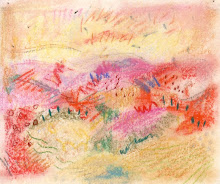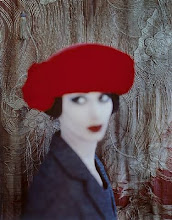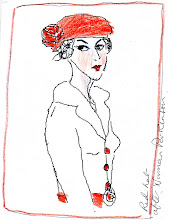
(Above) I saw an African Queen
9cm x 12.5cm
March 2010
Having had a colour postcard produced of this painting (which is actually just a little smaller than the postcard), I am now being asked "who is she?" "Who is the girl in the picture?"
Like much of my work, this painting started as a Sony Reader drawing/study (see below) after a fashion photograph (further below) that I happened to see whilst browsing on the Internet. I had recently been given the Reader as a present and I was experimenting with the Handwriting app, learning how to use it as a drawing tool. I was struck by the photograph because of the model's very penetrating gaze. It's a gaze that recalls the impenetrable look that many of Manet's models have, for example in Olympia and Dejeuner sur l'herbe. It's a gaze that engages with the viewer directly and creates equivalence between the subject and the object.
The title, again as many of the titles I create for my works, offers another layer of meaning, pointing as it does to the idea of perception. I saw the photograph of Tiguida Sissoko (who I now know to be a Malian/Nigerian supermodel) by chance. Not knowing at that stage anything about the sitter, my interpretation of the photograph was shaped by my impressions and perception: I saw an African Queen. Paintings are after all a representation of the artist's perceptions, which are shaped and moulded by their life and cultural experiences (you readily see, or remember seeing, what you are able to "recognize"). Now of course we live in a "media-tized" world and we carry with us, consciously or subconsciously, a plethora of images that in turn affect how we perceive the world around us. Much of my work is a comment on this experience, in particular on the presence in our collective psyche of the ubiquitous female face that has always and continues to dominate our culture's iconography. Where in the past we might have seen visual representations of mythic deities or saints and martyrs, we now see icons of (amongst others) fashion and beauty.
Of course, I am not the first to be intrigued by the gaze and the role it plays in our culture. There are precedents in art history and amongst other contemporary artists. The celebrity and fashionable portraits of Elizabeth Peyton come to mind as do the celebrity portraits of the American artist Karen Klimnik. In June 2000 the art critic Johnathan Jones wrote about Klimnik (with particular reference to her portrait of the British actor Hugh Grant) in the Guardian:
"This is a nice example of a relatively new genre of painting, which we might call the iconic portrait, not commissioned by its sitter but based on photographs, magazine cuttings, film clips. The painter puts a famous face on canvas, translating the voyeuristic look we fix on celebrity into art. Its history can be tracked through the 19th and early 20th centuries in painters like Degas and Sickert, who painted royalty glimpsed in the street and copied their faces from photographs. Later in the 20th century royalty mutated into celebrity and the most famous exponent of the iconic portrait was Andy Warhol, who helped to shape fame as we know it."
Regards my work, I should say that whilst I readily work from photographs and other images that are in the public domain, I tend to use less identifiable faces or faces that are "known" but not so easily named. I'm not so much concerned with the sitter's "celebrity" status and more intrigued by what makes a face "iconic". The title of this blog brings this aspect of the famous face to mind. The phrase is usually associated with one of two iconic photographic images of the 20th century : the photograph by Nick Ut of "the little girl" (Kim Phuc) running naked from her village in Vietnam after being badly burnt in a napalm attack, and the the National Geographic colour photograph by Steve McCurry of "the Afghan girl" (Sharbat Gula), which is, apparently, now the most "recognisable" image in the world. Although I've given their names, for all intents and purposes "the girl[s] in the picture" (of course, they are now women) are anonymous, but their images, like those of the courtesan who posed naked for Manet, have now been immortalised in the collective conscience.
Below: A Sony Reader drawing after a fashion photograph (further below) of the supermodel Tiguida Sissoko. The photograph seems to be quite widely referenced on the Internet but I can't credit the photographer as he/she is not identified, at least not by any of the sites where I've seen this photograph. If you know, let me know and I'll correct this omission.




























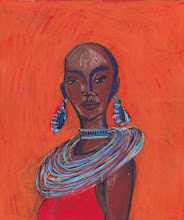
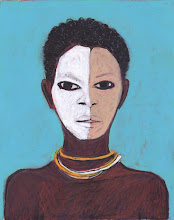
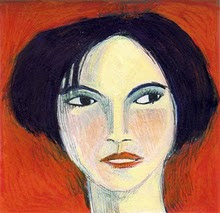
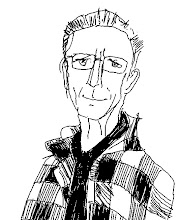

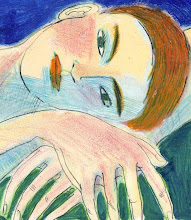

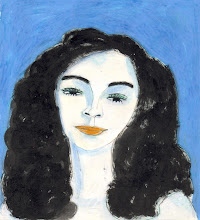.jpg)

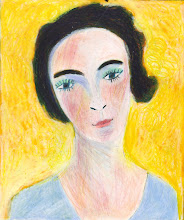




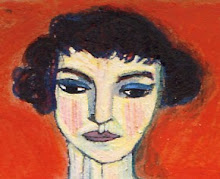

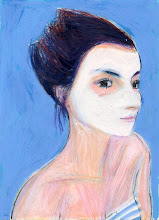

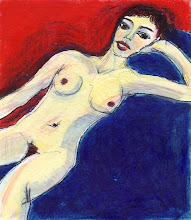




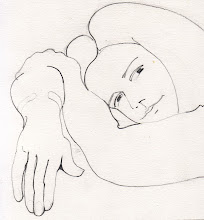

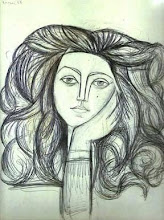






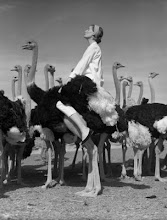
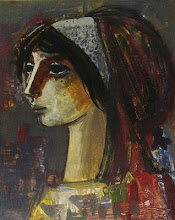.jpg)

